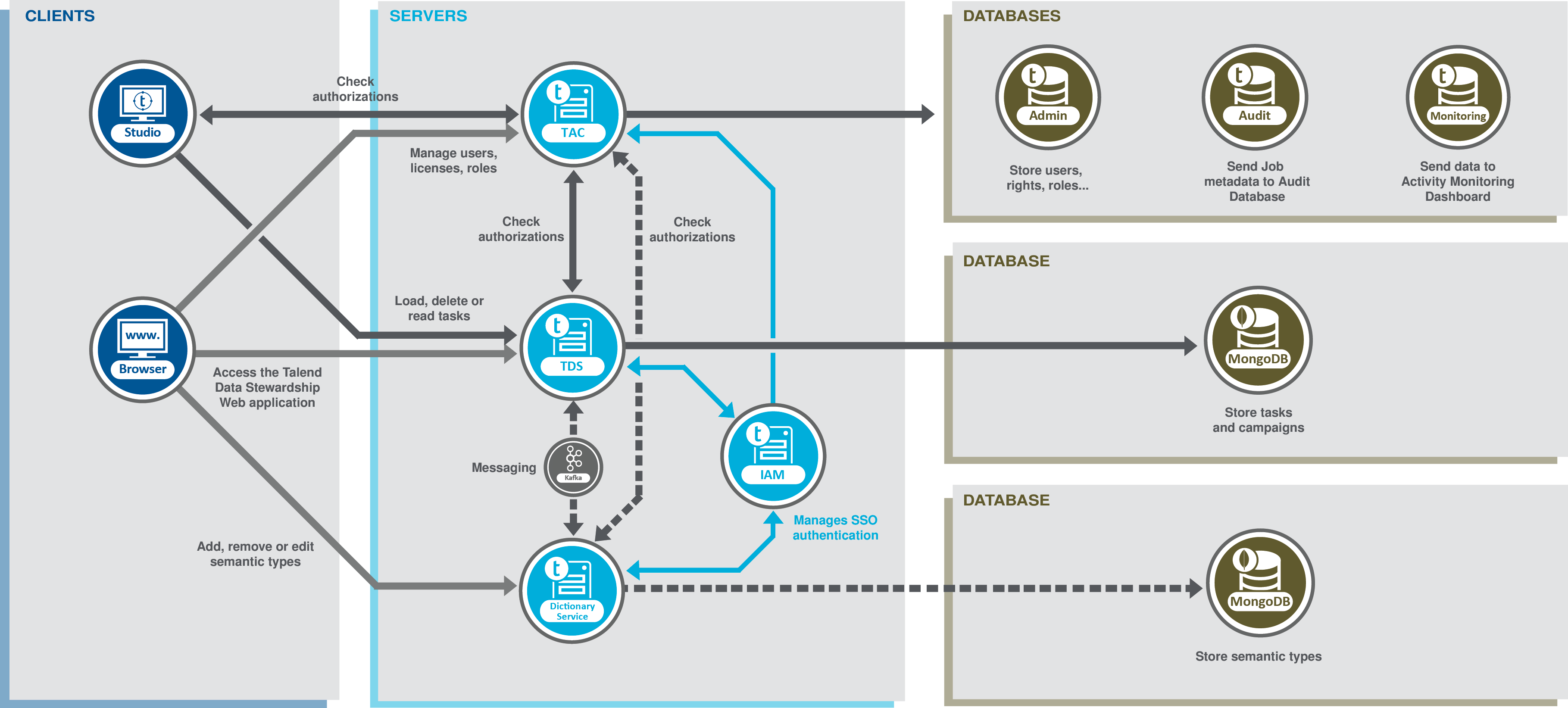Talend Data Stewardship architecture

The diagram is divided into three main parts:
Clients
The client block includes a web browser and Talend Studio.
- From your web browser, you can access Talend Data Stewardship. This is where campaign owners and data stewards manage campaigns and tasks.
- From Talend Studio, campaign owners can use Jobs with tDataStewardshipTaskOutput, tDataStewardshipTaskInput and tDataStewardshipTaskDelete to load, retrieve, or delete tasks from the campaigns created in the Talend Data Stewardship.
Servers
- In Talend Administration Center, campaign owners can administrate roles, users, projects, and licences.
- In Talend Data Stewardship, campaign owners manage data assets and organize the data interactions whenever human intervention is required to collaborate on data curation, arbitration, or validation.
- In Talend Dictionary Service, campaign owners can add, remove, or modify the semantic categories that
are applied to each column in your data when opened in Talend Data Stewardship.
The Kafka server is used to exchange messages on every single event done in the app such as modifying a data model, using a data model in a campaign, auditing actions performed on tasks and managing semantic categories using Talend Dictionary Service.
Databases
The databases block includes the databases used with Talend Administration Center and a MongoDB database.
You can use the Administration database to manage user accounts and rights, the Audit database to evaluate different aspects of the Jobs implemented in the Studio, and the Monitoring database to monitor the execution of technical processes and service calls.
One MongoDB is used to store campaigns and tasks and the second MongoDB is used to store semantic types. Nothing is saved directly on your computer
You can share the same MongoDB betweenTalend Data Stewardship andTalend Dictionary Service. In such a case you need to have two databases on the MongoDB instance.
